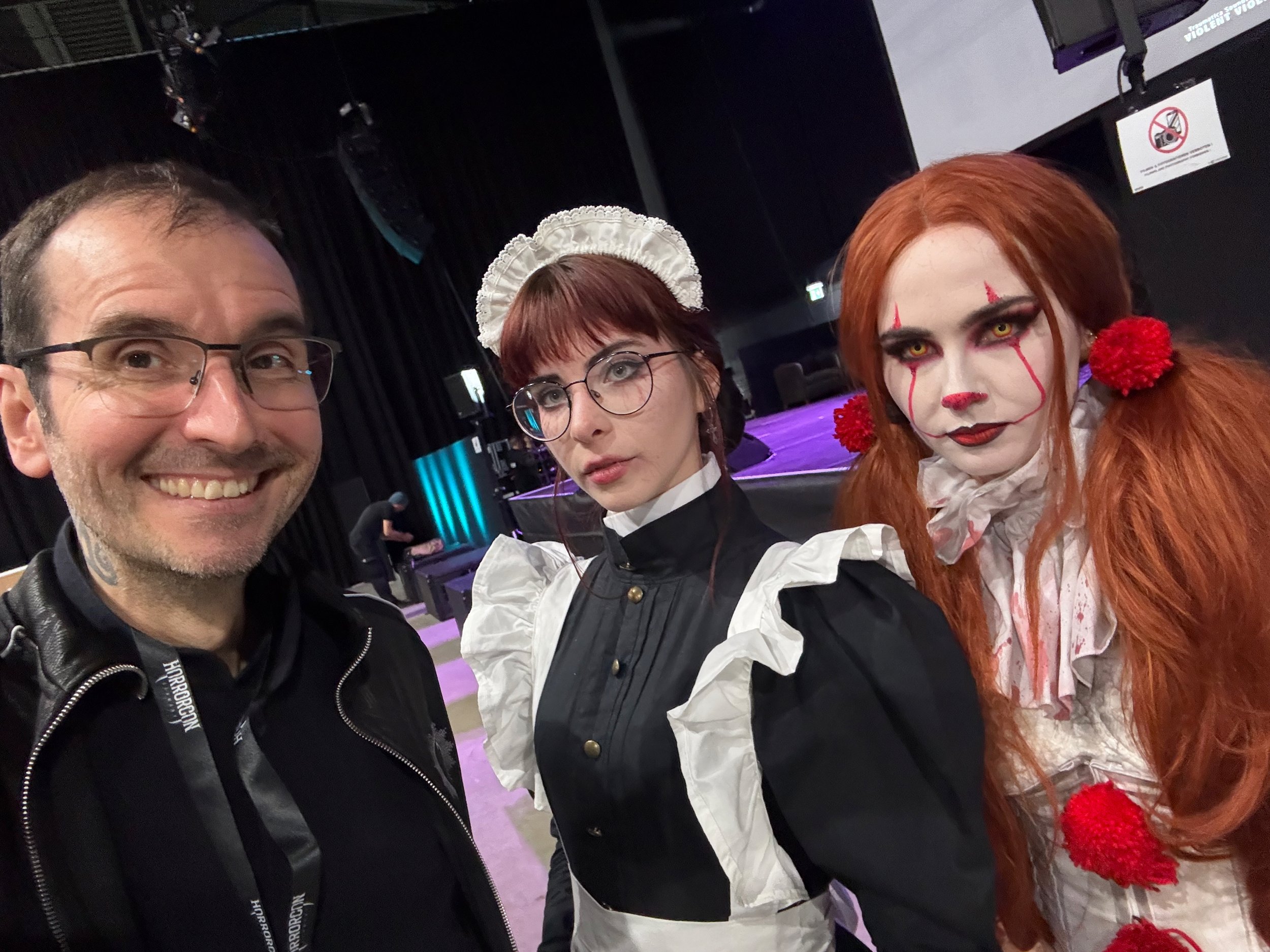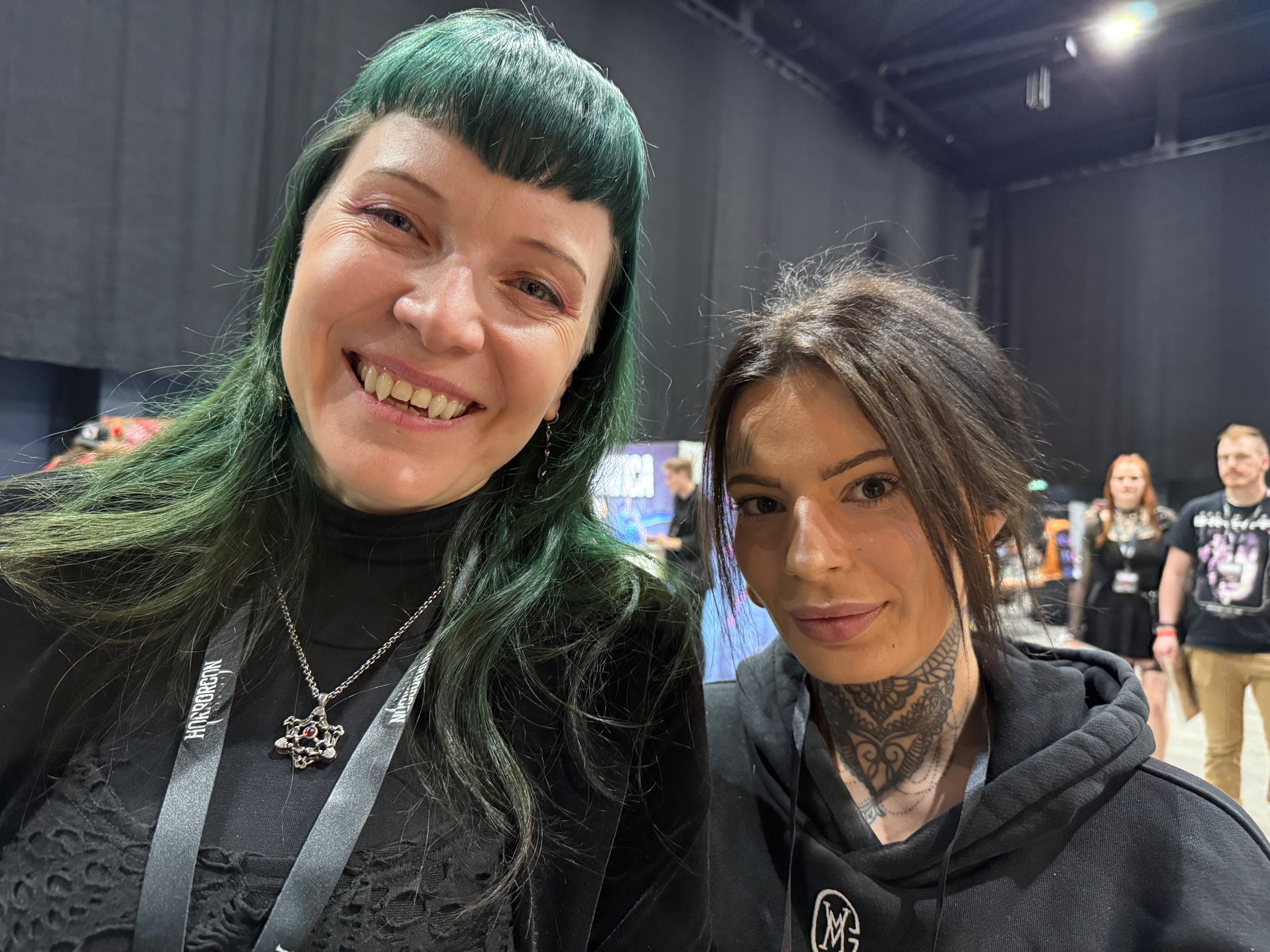Der große Unterschied des WGTs zu Parties, auf denen die Garderobe mit vierhundert schwarzen Mänteln bestückt ist (schon erlebt, auch cool) oder Festivals, die unter der tausendfach verfluchten Sonne auf Riesenflächen stattfinden, ist eben der: dass in Leipzig jeder vier Tage lang macht, was ErSieEs will. Das gilt sowohl für die Künstlerinnen als auch die Veranstalter, die sich so dermaßen nicht reinreden lassen, dass ihre Standfestigkeit schon fast gruselig ist. Doch davon erfährt keiner was. Bis vor Kurzem gab es noch nicht einmal einen englischsprachigen Wikipedia-Eintrag zum Wave-Gotik-Treffen. Ich habe überlegt und es dann gelassen. Wer außer den TeilnehmerInnen soll schon verstehen, was dort seit zwanzig Jahren passiert?
Dass sich Menschen wirklich in fast mittelalterlichen Seifen-Zubern säubern, um sogleich wieder in den Schlamm zu steigen, dass Vampyre nachts auf weichem Rasen lagern, dass sich knallrosa Polyester-Locken aus Cyberköpfen winden oder blasse Gothic-Lolitas ihre sexuell verirrten FreundInnen an die Kette legen, während Oldschool-EBMler mit Zahnrad-Shirt die Fassung zu wahren versuchen, während um sie herum die vierte und fünfte Generation mal wieder nichts als Quatsch macht und auf dem Zeltplatz zu viel säuft, anstatt den alten Göttern auf der Bühne zu huldigen: Das begreift keiner, der nicht tief eintaucht.
Apropos Bühnen. Dass die so weit auseinander liegen, bürdet den ZuschauerInnen nervtötende Reisen auf, vor allem, wenn sie kein Geld für ein Taxi oder wahlweise viel Zeit oder reiche Gönner haben. Daher lassen viele WGT-Gänger das Hin- und Herreisen einfach bleiben und schnallen sich auf einem der zahlreichen Gelände fest. Oder sie kleiden sich tagelang in den Agra-Shops ein, kaufen Bücher oder lassen sich Aufsteckzähne oder Halsbänder anpassen. Oder sie quatschen nur Nacht um Nacht mit ihren Buddies. Sinn ergibt das nicht, denn eigentlich ist das WGT ja das schwärzeste Musik-Festival der Erde. Macht aber nix. WGTler ziehen eben hin und ziehen her, doch irgendwann zieht niemand mehr. Dieser Moment der Ruhe und Einsicht ist schon fast religiös: Es ist der völlige Einklang mit den vielen schwarzen Subkulturen nebst der Einsicht, wie stark sie schillern — ohne dass irgendwer da draußen das wahrnimmt.
Zwar beschlossen auch die Boulevard-Medien ab 2009, dass Gruftis die FreundInnen Leipzigs seien, weil sie so eine prima Pensions- und Hotel-Auslastung besorgten sowie am Bahnhof durch unerwartete Höflichkeit auffielen. Dennoch gelangte bisher kaum Inhaltliches vom WGT nach außen. Auch wenn es abgedroschener nicht sein kann — ich sehe wirklich die tausenden Schuppen der schwarzen Schmetterlingsflügel, wenn ich durch die WGT-Menge treibe. Doch im Dunkeln ist die Sicht halt schlecht, wenn man es nicht gewohnt ist.
So kommt es, dass der Rest der Welt sich eben nicht für schwarze Subkulturen interessiert. Letztlich ist das WGT auch das Festival der Traumatisierten, der Ausgestoßenen, der Kinder, die früher zu mild oder zu strange oder zu zurückgezogen waren, als dass sie Fußball hätten lernen oder Tiere als Eigentum betrachten können. Gruftis grübeln und zweifeln halt lieber, anstatt sich an die brachialen oder — Gott bewahre — bunten Fronten zu begeben. Manche wachsen heraus, andere nicht. Oh, sagte ich Gott? Entschuldigung.
Dazu passte einer der für mich bewegendsten Vorträge, bei dem meine Ex-Frau [...] und ich als Redner über Serienmord hinterher durch viele Anfragen feststellten, dass nicht nur viele Opfer von Missbrauch, sondern auch eine Anzahl von möglichen Tätern im WGT-Publikum saß. Dass ich trotz dieser ansonsten luftabschneidenden Gedanken AGONOIZE krachen lassen und ausnahmsweise sogar EMILIANA TORRINI auf der Leinwand durch den Dschungel toben lassen wollte, durfte und konnte, zeugt von der sprichwörtlichen Toleranz und, auch wenn der Begriff eigentlich nicht so richtig passt — extremen Coolness der Szene.
Natürlich bitchen auch Elektroheads über Guitarrenmusique, EBMler über blutende Engel mit samtenen Tränen und überhaupt alle über alle, ganz wie in jedem anderen Kleingartenverein. Doch auch dabei herrscht wieder ein großer Unterschied zum Rest der Welt: Die harten Kämpfe bleiben in den schwarzen Szenen aus und die Bitterkeit im eigenen Herz. Manchmal heilt sie, wie gesagt. Manchmal aber auch nicht. Das WGT ist daher für mich ein großes Treffen von Phantomen, Geistern, Elfen, Monstern und Gespenstern, die miteinander wispern und flüstern, anstatt zu brüllen und zu kloppen.
Dass dabei regelmäßig meine Kofferrollen von den schrottigen Granitplatten der Leipziger Bürgersteige zerschunden werden, dass die Bändchenausgabe mal klappt und mal nicht, dass der schwarze Nagellack zumindest in der Agra zu teuer verkauft wird und dass die Toilettenräume von sehr eigentümlichen Wesen, oft genug undefinierbaren Geschlechts, bevölkert werden — all das ist Teil der Tatsache, dass beim WGT etwas ganz Besonders vonstatten geht — nämlich das Outing von Menschen, die andernfalls so unauffällig sind, dass man sie niemals gefunden hätte, wenn, ja wenn, es das WGT nicht schon seit zwanzig Jahren gäbe. Danke schön.
























































































































